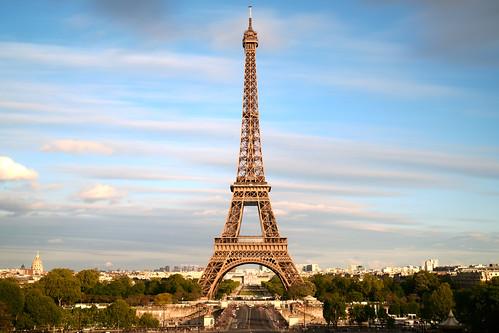The Eiffel Tower, an emblematic beacon of France and specifically of its capital city, Paris, remains one of the world’s most recognizable and visited monuments. This staggering architectural marvel was the brainchild of Gustave Eiffel, an engineer, who oversaw its construction for the 1889 Exposition Universelle (World’s Fair), commemorating the 100th anniversary of the French Revolution.
The Eiffel Tower is situated on the Champ de Mars, near the Seine River in the heart of Paris. Why Paris, you might ask? Paris was a bustling epicenter of culture, art, and science during the late 19th century. It represented a city poised on the edge of the modern era. The tower was conceived as a demonstration of France’s industrial prowess to the world, underlining the nation’s emergence as a global power.
Science underpins every inch of the Eiffel Tower’s construction. Gustave Eiffel and his team of engineers employed revolutionary principles of architectural science to achieve their ambitious vision. This involved precise calculations to ensure that the 7,300-ton structure would withstand wind forces. This was achieved through its unique shape, which distributes wind loads more evenly, and its open lattice structure, which allows wind to flow through it. The tower also expands and contracts due to temperature changes, a phenomenon considered during its design. For these reasons, the Eiffel Tower has survived when other taller structures of the period have not.
Looking into the unique facts about the Eiffel Tower:
- The height of the Eiffel Tower varies: According to the Eiffel Tower’s official website, the tower’s height fluctuates by approximately 15 cm due to the expansion and contraction of the metal on hot and cold days.
- The Eiffel Tower was not initially beloved: According to the book “Eiffel’s Tower: And the World’s Fair Where Buffalo Bill Beguiled Paris, the Artists Quarreled, and Thomas Edison Became a Count” by Jill Jonnes, many Parisians despised the tower’s design when it was first erected. They saw it as an eyesore in their beautiful city.
- The Eiffel Tower was almost demolished: As per a BBC report, the Eiffel Tower was initially intended to stand for only 20 years. It was saved from demolition because it was repurposed as a radio transmission tower.
Historian and author Henri Loyrette, argue for its enduring significance as a symbol of industrial age progress. Loyrette, in his book “Gustave Eiffel,” notes that the tower, far from being a mere curiosity, heralded the emergence of new architectural possibilities driven by scientific advancements.
Books on the subject, like “The Eiffel Tower: A Century of Change” by Herve Champollion and “The Eiffel Tower: A Description of the Monument, Its Construction, Its Machinery, Its Object, and Its Utility” by Gustave Eiffel himself, speak of the enduring fascination and significance of the tower. They recount the tower’s engineering marvels, the role it played in broadcasting and communications, and its cultural importance as a symbol of France.
As for Eiffel’s private apartment, it does exist. The Eiffel Tower’s official website acknowledges this. The apartment, located at the top, was not for residential use but was instead used by Eiffel to entertain prestigious guests, including Thomas Edison, and indeed to carry out scientific experiments. However, contrary to some sensationalist claims, the apartment isn’t a luxurious penthouse suite; instead, it’s a modest space furnished in the style of the late 19th century.
The Eiffel Tower stands tall not just as an architectural marvel but also as an enduring symbol of human ingenuity, scientific progress, and cultural significance. Its history, peppered with unique anecdotes and facts, adds a layer of mystique to this iconic monument.
View Eiffel Tower Webcam.

